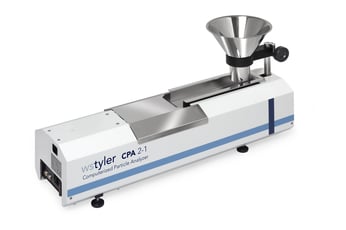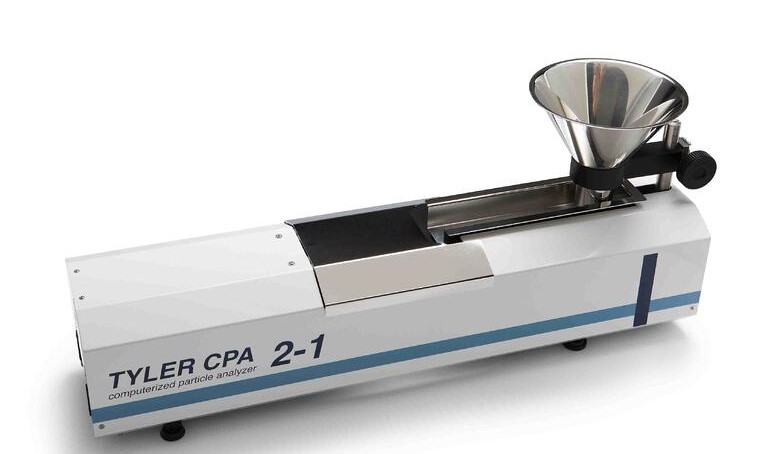Computerized Particle Analyzer 2-1 Review: Efficient Particle Analysis
Those seasoned in the art of particle size analysis know that for the longest time, the industry remained stagnant for decades in terms of technological advances. However, during the late ’90s and early 2000s, the technological boom we are currently experiencing today began and almost immediately leaked into the particle analysis universe.
Devices, such as the Computerized Paritcle Analyzer, took to the forefront of the practice analysis universe, automating the processes across dozens of industries. But with so many variating devices, it can be daunting when faced with the task of figuring out which one is best for you and your lab.
Fortunately, we here at W.S. Tyler have experienced such devices first hand and want to help you understand how they have worked in our labs and the labs of our customers.
And with that, we want to provide an inside look into the CPA 2-1 and put this article together to review the following:
- What the CPA 2-1 is
- How much the CPA 2-1 costs
- The specs of the CPA 2-1
- How the CPA 2-1 works
- The pros of using a CPA 2-1
- The cons of using a CPA 2-1
What Is a Computerized Particle Analyzer?

The W.S. Tyler Computerized Particle Analyzer, or CPA, is a dynamic image analysis system designed to efficiently test sample material to identify the size and shape of individual particles. Testing particle sizes down to ten microns, the CPA employs a line scan camera to read 28,000 lines every second, equating to 10,000 particles.
The volume of particles that can be tested quickly makes the computerized particle analyzer ideal for operations that must test material several times a day.
How Does It Cost?
When investing in a Computerized Particle Analyzer 2-1, you can expect to pay around $60,000 per unit. This price tag includes the CPA device, a PC to run the software, the required cables, a line scan camera calibration frame, a user manual, software and software key, and cleaning accessories.
When it comes to servicing your device, you will not acquire any serving expenses if you are experiencing technical issues that hinder your ability to test your material. However, if you request to have your CPA unit serviced and the service does not affect your ability to conduct a dynamic image analysis, such as requesting a software update, you should expect servicing fees.
What Are the Specs?
- Measuring Range: 20 micron to 30mm
- Dimensions: 800 x 200 x 355
- Weight: 35lbs (16kg)
- Horizontal Resolution: 2927 pixels
- Pixel Frequency: 100MHz
- Light Source: LED
Available with either 230 or 115-volt capabilities, the CPA 2-1 operates for a few minutes at a time, depending on your industry standards. That said, the amount of sample you can run at a time ultimately controls how long you will spend testing material.
It should be noted that the feeder tray has a 55mm wide profile which means the line scan camera can scan an equivalent sample plain. Additionally, the hopper funnel has the ability to hold 1.5 liters of material.
Operation
The Computerized Particle Analyzer 2-1 utilizes a high-resolution line scan camera to accurately depict the size and shape of each particle that makes up a sample. After you pour sample material into the hopper funnel, the operator must adjust the funnel height so material can be evenly distributed onto the feeder tray.
During operation, this feeder tray makes subtle vibrations to create a flat plane of material while projecting the material forward towards the line scan camera. Once material reaches the end, it will begin to cascade between the line scan camera and LED light, with the camera picking up the particle’s shadow.
For a more detailed breakdown of how you can conduct a practical dynamic image analysis with the CPA 2-1, review the following article:
Your results will be reflected in the software. In short, a dynamic image analysis conducted using a CPA 2-1 will generate insight into the shortest and longest distance between two parallel tangents, the vertical dimension of the particles, the diameter of spherical particles, the bisected horizontal line, as well as the circularity, sphericity, and roundness of the individual particles.
Additionally, the software will automatically determine the amount of sample weight retained on each virtual sieve and the amount of material that passed through each virtual sieve. This is all in comparison to the mass of the sample in its entirety.
What Are the Pros?
The Computerized Particle Analyzer’s ability to test material in a matter of minutes is by far its most noteworthy quality. In fact, particle analysis testing typically takes upwards to 30 minutes with traditional test sieve analysis can be done accurately and confidently in under five minutes.
Another significant benefit of the CPA 2-1 is that it can be set up as an online unit to provide real-time insight into your production line. This means you can make necessary adjustments to your production line as problems present themselves, reducing waste and saving money.
Additionally, the functionality offered by the CPA 2-1 helps eliminate most manual variables associated with particle size and shape analysis. As a result, human error is nearly non-existent once a dependable representative sample is gathered.
To that end, with the help of programmable logic controllers, the CPA 2-1 can automatically retrieve sample material from your production line, test it, and deliver results with little to no input from a lab operator.
What Are the Cons?
If we address the elephant in the room, the biggest downside to the CPA 2-1 is the initial investment of $60,000. This price can be particularly intimidating compared to other devices such as the W.S. Tyler RO-TAP RX-29, which costs roughly $2,900.
However, when you get down to brass tacks and look at the bigger picture, traditional test sieve analysis testing takes roughly 3,250 hours a year, whereas the CPA 2-1 takes only 325. Taking labor and energy expenses into consideration, the CPA essentially pays for itself in a little over a year.
For more information on the return on investment on a CPA, take a moment and read the article below:

Another significant issue customers have is that that device can only be used for particle size and shape analysis. It is often believed that because the CPA 2-1 employs a high-resolution camera, it can accommodate operations looking to separate particles by color.
The cameras simply read the shadows cast by the LED and cannot identify particle color.
Additionally, only dry, free-flowing materials can be tested using the Computerized Particle Analyzer 2-1. This is particularly important as similar devices are designed to analyze particles that makeup and are submerged in various liquids.
Get To Know the Computerized Particle Analyzer First Hand
The W.S. Tyler Computerized Particle Analyzer 2-1 is a device used to help facilitate efficient particle size and shape analysis testing. It is regarded highly for delivering a means to test material within five minutes; however, it has a hefty price tag that can be intimidating at first glance.
So, you now know the generalized pros and cons associated with using a CPA 2-1. Now what?
Well, the only way to know if the device is genuinely suitable for you is to see how it performs in your lab testing your material. This is where a device demo is key.
Here at W.S. Tyler, we strive to do whatever it takes to learn your operation inside and out, even if it means conducting an on-site visit to help you pinpoint what particle size analysis equipment your operation needs.
To learn more about what to expect with a CPA demo and schedule one for yourself, read the following article:
About Ronnie Brown
Ronnie is the Content Writer for W.S. Tyler and has four years of experience as a professional writer. He strives to expand his knowledge on all things particle analysis and woven wire mesh to leverage his exceptional writing and graphic design skills, creating a one-of-a-kind experience for customers.



